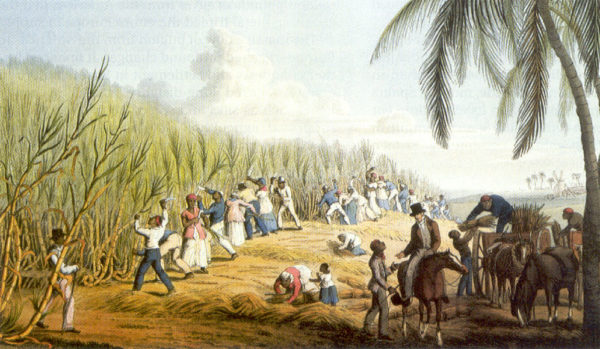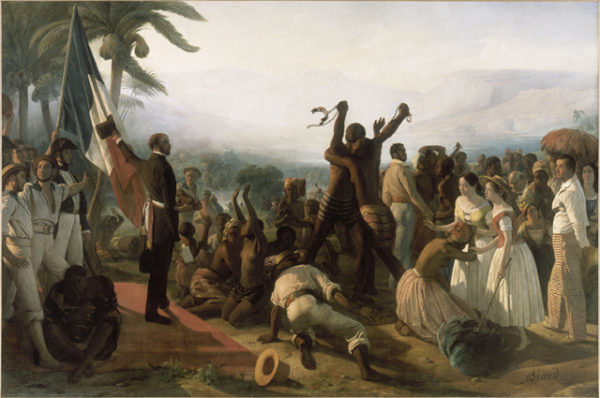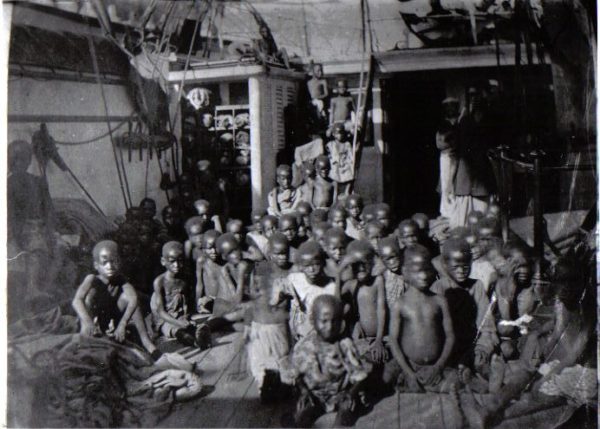France
With over 1,600,000 enslaved Africans transported to the West Indies, France was clearly a major player in the trade. Its slave ports were a major contributor to the country’s economic advancements in the 18th century. Many of its cities on the west coast, such as Nantes, Lorient, La Rochelle, and Bordeaux, built their wealth through the major profits of triangular slave trade.
Between 1738 and 1745, from Nantes, France’s leading slave port, 55,000 slaves were taken to the New World in 180 ships. From 1713 to 1775, nearly 800 vessels in the slave trade sailed from Nantes.
By the late 1780s, French Saint Domingue, which is modern-day Haiti, became the richest and most prosperous colony in the West Indies, cementing its status as a vital port in the Americas for goods and products flowing to and from France and Europe.
The income and taxes from slave-based sugar production became a major source of the French national budget. Each year over 600 vessels visited the ports of Haiti to carry its sugar, coffee, cotton, indigo, and cacao to European consumers.
Netherlands
The Dutch West India Company, a chartered company of Dutch merchants, was established in 1621 as a monopoly over the African slave trade to Brazil, the Caribbean and North America.
WIC had offices in Amsterdam, Rotterdam, Hoorn, Middelburg and Groningen, but one-fourth of Africans transported across the Atlantic by the company were moved in slave ships from Amsterdam. Almost all of the money that financed slave plantations in Suriname and the Antilles came from bankers in Amsterdam, just as many of the ships used to transport slaves were built there.
Many of the raw materials that were turned into finished goods in Amsterdam, such as sugar and coffee, were grown in the colonies using slave labor and then refined in factories in the Jordaan neighborhood.
Revenue from the goods produced with slave labor funded much of The Netherlands’ golden age in the 17th century, a period renowned for its artistic, literary, scientific, and philosophical achievements.
Slave labor created vast sources of wealth for the Dutch in the form of precious metals, sugar, tobacco, cocoa, coffee and cotton and other goods, and helped to fund the creation of Amsterdam’s beautiful and famous canals and city center.
Portugal
Portugal was the first of all European countries to become involved in the Atlantic slave trade. From the 15th to 19th century, the Portuguese exported 4.5 million Africans as slaves to the Americas, making it Europe’s largest trafficker of human beings.
Slave labor was the driving force behind the growth of the sugar economy in Portugal’s colony of Brazil, and sugar was the primary export from 1600 to 1650. Gold and diamond deposits were discovered in Brazil in 1690, which sparked an increase in the importation of African slaves to power this newly profitable market.
The large portion of the Brazilian inland where gold was extracted was known as the Minas Gerais (General Mines). Gold mining in this area became the main economic activity of colonial Brazil during the 18th century. In Portugal, the gold was mainly used to pay for industrialized goods such as textiles and weapons, and to build magnificent baroque monuments like the Convent of Mafra.
Spain
Starting in 1492, Spain was the first European country to colonize the New World, where they established an economic monopoly in the territories of Florida and other parts of North America, Mexico, Trinidad, Cuba and other Caribbean islands. The native populations of these colonies were mostly dying from disease or enslavement, so the Spanish were forced to increasingly rely on African slave labor to run their colonies.
The money generated from these settlements created great wealth for the Hapsburg and Bourbon dynasties throughout Spain’s hold on the area. But it also attracted Spain’s European rivals, prompting Spanish rulers to spend the riches from the Americas to fuel successive European wars.
Spanish treasure fleets were used to protect the cargo transported across the Atlantic Ocean. The ships’ cargo included lumber, manufactured goods, various metal resources and expensive luxury goods including silver, gold, gems, pearls, spices, sugar, tobacco leaf and silk.
Port cities in Spain flourished. Seville, which had a royal monopoly on New World trade, was transformed from a provincial port into a major city and political center. Since the Spanish colonists were not yet producing their own staples such as wine, oil, flour, arms and leather, and had large financial reserves to pay for them, prices in Castile and Andalusia rose sharply as traders bought up goods to ship out.
Prices of oil, wine and wheat tripled between 1511 and 1539. The great vineyards of Jerez, the olive groves of Jaén, and the arms and leather industry of Toledo were established on their present scale during these years.









 Reply
Reply